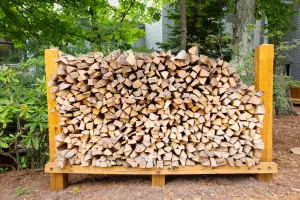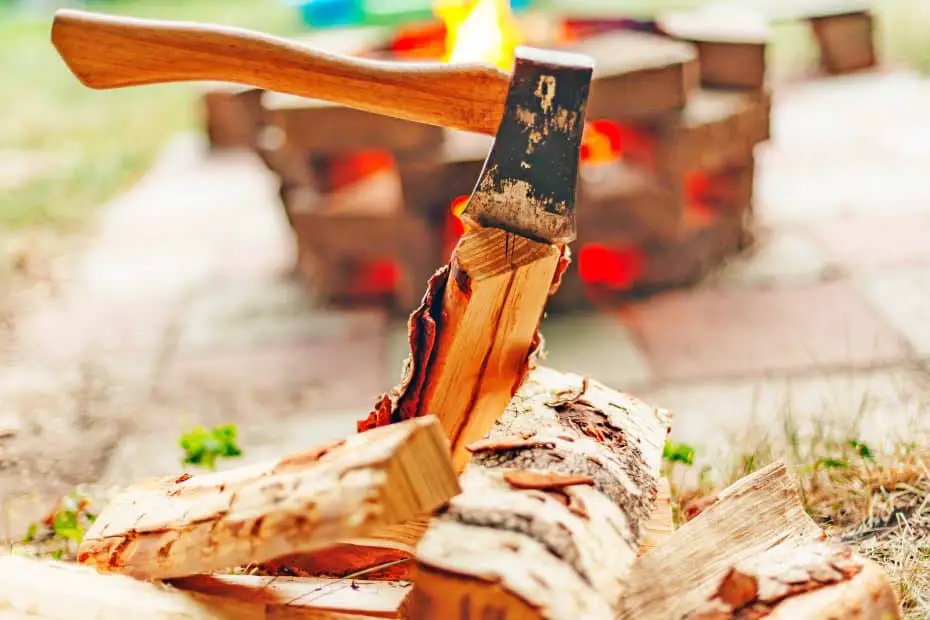Have you ever wondered what type of wood to use to heat your home? This may seem trivial, but the choice of wood is actually very important. Indeed, some woods can be harmful to the environment, your health, and even damage your chimney or stove. And if you plan to gather wood from the forest, it is also important to first inquire about local regulations in force.
Why are some woods not ideal for heating?
Using any type of wood for heating is not recommended due to several key factors. Although ease of access or economic considerations may prompt us to choose the most available wood, this approach can be counterproductive. Some woods burn too quickly, not providing economical heat, while others can clog your chimney, requiring frequent maintenance.
In addition, some types of wood can be harmful to the environment and dangerous to health due to their toxic emissions when burned. It is therefore essential to select suitable woods to ensure efficient, clean, and safe combustion.

Precautions to take
- Check that the wood found in the forest is not moldy and dry it if necessary
- Consult a professional or specialized dealer if you have any doubts about the type of wood you want to use
The 10 types of wood to avoid for heating
Table of Contents
Resinous and some softwoods
It is not advisable to use resinous woods such as fir, larch, or spruce, as well as certain softwoods such as lime, alder, birch, and poplar, in your chimneys. Why? These species are known to burn quickly and release tar that will clog your flue.
List of resinous woods and softwoods to avoid:
- Fir
- Larch
- Spruce
- Lime
- Alder
- Birch
- Poplar
Some moist hardwoods
Not all hardwoods are recommended for domestic use, especially oak. Indeed, it takes almost two years for oak wood to dry properly, making its use impractical and uneconomical.
Your sharing is our strength! Encourage us by spreading our free articles.
Green and moist woods
Green woods, with a high moisture content, should also be avoided. They emit a lot of smoke when burned, which pollutes the atmosphere. Similarly, woods stored in a humid place are not suitable for combustion.
Toxic species
Some wood species are known to be harmful to the environment and health. Among these, we find:
- Oleander
- Figured teak
- Green carob tree
Burning these wood species can release toxic substances into the air, which are dangerous for your health and that of the people around you.
Driftwood
Driftwood is appreciated for its decorative properties, but it has no place in a chimney or stove. When burned, driftwood releases salt that becomes corrosive to your flue, causing its deterioration.
Painted wood
Painted woods contain chemicals that, when burned, emit toxic gases. It is therefore imperative never to use this type of wood to heat your home.
Treated wood
When treated woods with pesticides or preservatives are burned, they emit toxic fumes that can be harmful to health. Therefore, avoid using these species in your stove or chimney.
Reconstituted wood
Finally, reconstituted wood, such as that used to make particle boards or flat-pack furniture, is also not suitable for combustion. When burned, it also releases toxic fumes, even carcinogenic agents.
Moldy woods
Woods that show signs of mold can sometimes emit pollutants when burned. If you plan to use wood found on the forest floor, check that it does not have mold, otherwise make sure to dry it before use.
By taking these tips into account, you will be able to heat your home safely while preserving the environment and the durability of your chimney or stove. Do not hesitate to seek advice from a professional before making your choice.



